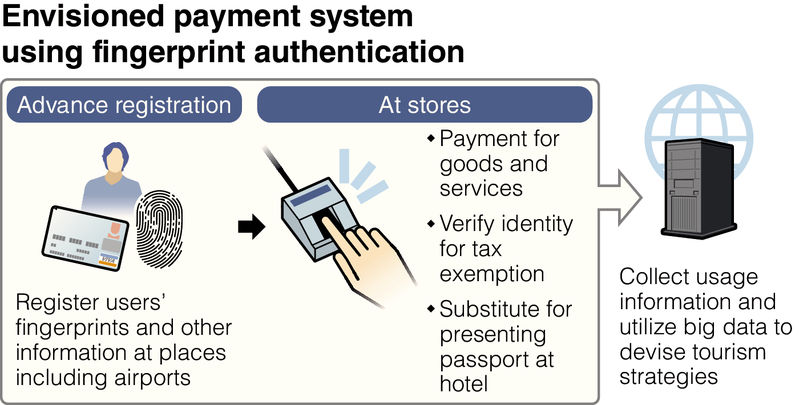Japan will test the ability to make purchases using fingerprints

The Japanese government plans this summer to begin a trial project to accept payments in stores on the basis of a fingerprint. The system is designed for foreign tourists coming to the country.
The government claims that in such a way it ensures the safety of visitors to admire the beauty of Japan, which in turn will lead to an increase in tourist traffic. The government plans by 2020 to increase the annual number of tourists to 40 million people.
')
In addition, it will be another way to demonstrate the technical advancement of the country. They want to launch the system at full capacity by 2020, when the Olympic Games will be held in Tokyo, and then the Paralympic Games.
To do this, visiting tourists will be asked to leave their fingerprints at the airport and tie them to a bank card. After that, they will be able to make purchases in stores and make tax deductions for two prints. Fingerprint scanners will first be installed at 300 points of sale, located in places popular with tourists, which will take part in the experiment.
In addition to shopping in stores, instead of the mandatory provision of identification documents in hotels, tourists will also be able to witness their identity through fingerprints. At the same time, an analysis of the movements and behavior of tourists will allow the country's ministry of tourism to better plan tourist routes and develop the industry.
There are concerns that many tourists will be reluctant to leave such personal information as fingerprints. True, in Japan there is already a successful experience of such events. Last year, visitors could leave their fingerprints in the Huys-ten-Bose theme park in Sasebo, and then make payments in dozens of restaurants and shops.
The representative of the park said that the system was positively received by visitors, especially children, who, thanks to it, did not have to get their wallets out of their pockets every time.
And this month, Tokyo Bank Aeon Bank will start testing the system, with the help of which bank customers can receive cash at ATMs using their own fingerprints.
Source: https://habr.com/ru/post/392919/
All Articles